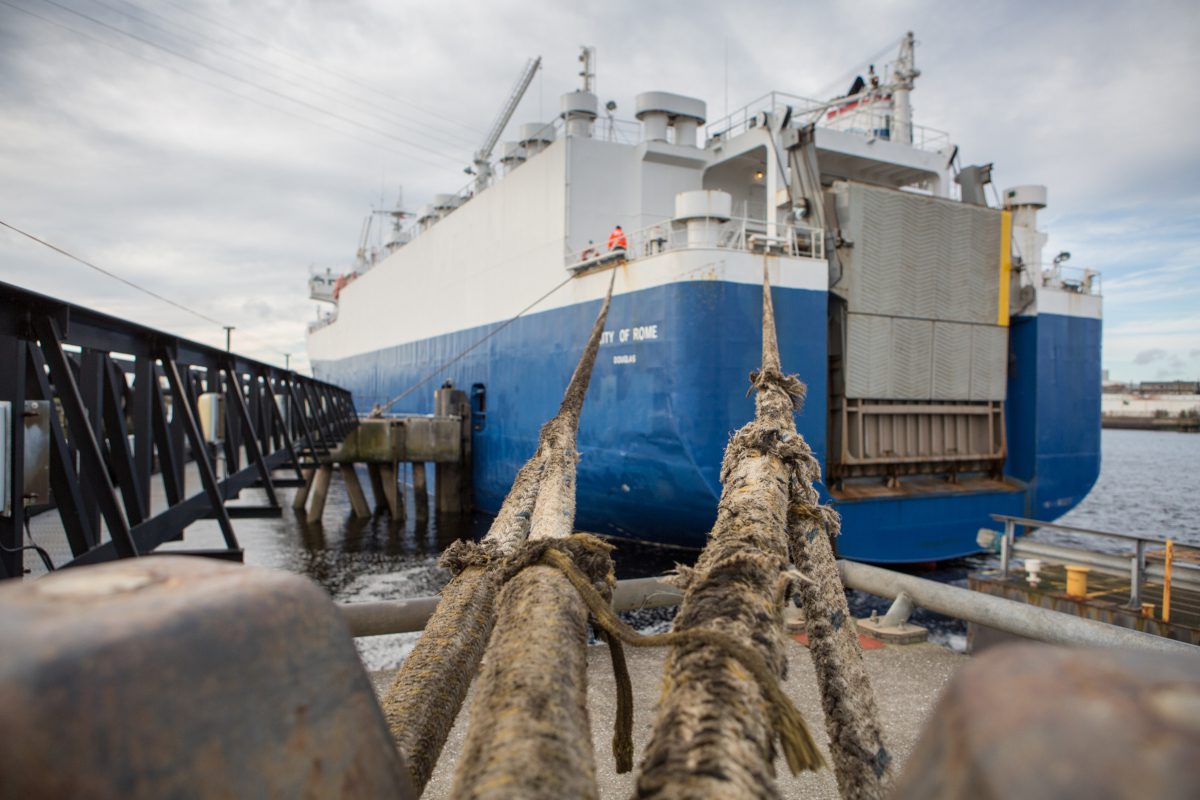
A free online tool to help UK ports meet their net zero targets has created by National Grid Electricity Transmission (NGET) in partnership with Siemens.
With support and guidance from the British Ports Association (BPA), the decarbonisation tool will help ports forecast the future infrastructure required to meet potential increased demand for electricity from zero emission port operations.
The Maritime sector is responsible for 5% of UK transport emissions, with diesel fuel predominantly used to power vehicles and equipment. It is estimated that between now and around 2050, the annual electricity demand across the ports could increase to around 250 Gigawatt hours (GWh) under a ‘business as usual’ scenario and to more than 4,000 GWh under an ambitious emission reduction scenario*.
If ports are to meet their net zero targets, the demand for clean energy will need to be increased and ports will likely need completely new connections for transmission. Also, NGET will need to invest in the network for the increased capacity which could include a range of upgrades to substations and circuits.
Ports have already begun to decarbonise with government modelling showing they can achieve net zero through a transition to alternative fuel and the integration of ports into the decarbonised energy network.
The decarbonisation tool hopes to help accelerate the transition by modelling future peak demand for electricity and give an estimate of the connections required, both to the local distribution network and the national transmission system.
It does this by asking questions about the assets a port has on site – from the number of berths, and types of cranes, to the number of car parking spaces – matching it with estimates of the peak power demand for the site.
The tool is offered in two versions. One version makes assessments based on the asset information input; the other version is customisable, allowing the port to change the assumptions if appropriate. The idea is to make the tool simple to use, and to give ports preliminary guidance to allow for a more detailed insight to meet their requirements.
Once ports have downloaded and worked through the decarbonisation tool, they can contact National Grid with the preliminary findings, for a more in-depth conversation if required.
Mark Simmonds, Director of Policy & External Affairs, British Ports Association comments: “UK Ports and the Maritime sector have a crucial role to play in meeting future net zero targets.
“With the support of the Decarbonisation Tool, UK ports can begin to plan their transition to alternative fuel powered vessels using energy from low or zero emission sources, as well as the integration of ports into the decarbonised energy network.
“Ports recognise the scale of the challenge in reducing emissions from their operations and from ships. Increasing electrification will play a major role in that. This tool will help ports and terminals to better understand their network infrastructure and the complexities involved in power supply. We hope it will lead to more informed discussions about their potential future electricity demands.”
Dr Russell Fowler, Senior Project Manager for Decarbonisation of Transport at National Grid explains: “To meet the UK’s net zero targets, all modes of transport will need to decarbonise, no matter the scale and complexity, with a likely increased demand for electricity.
“We are very keen to encourage ports to interact with us. The tool has been developed in the best interests of the port operators to help us plan together a decarbonised future. Through early collaboration we can identify the infrastructure required and ensure a smooth transition to a cleaner world.”
Siemens’ Smart Infrastructure Sector Lead for UK Ports, Lynsey Jeffers UK adds: “With our expertise in creating sustainable port solutions, we are delighted to have helped National Grid create this decarbonisation tool.
“This tool will help ports get a better idea of what their options are when it comes to electrification. Ports are used to planning for the long term. Port infrastructure, plant and machinery lasts for decades and a lot of the thinking, planning and investment in lowering emissions from ships and ports needs to happen sooner rather than later. We hope that this will make that task a little bit easier.”
To learn more about the Decarbonisation of Transport and to access the decarbonisation online tool click here.
Notes
*Source: A Summary Report for the Department for Transport – Reducing the Maritime Sector’s Contribution to climate change and pollution 2019.






